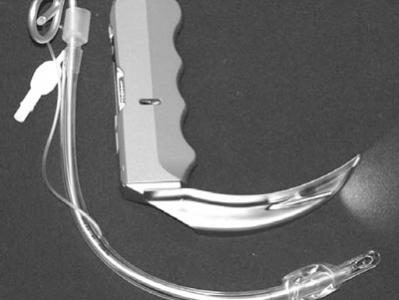Introduction
Airway management is practiced by anaesthesiologists, emergency physicians, critical care experts, and less frequently by specialists in other disciplines. Pre hospital personnel and military medics are also called upon to provide airway support for acutely ill and injured patients. Intubation success rates are decreased in the pre hospital setting, and when a difficult airway is unexpectedly encountered [1]. Novel approaches to improved airway rescue and management include the use of video-enable devices, which can mitigate many unfavorable factors which contribute to low intubation success rates in emergency situations. Laryngeal visualisation is a primary determinant of successful intubation, and video-enabled devices significantly improve visualisation of laryngeal structures [2]. Training in the utilisation of video-enabled devices requires deliberate practice for unique eye-hand coordination and psychomotor skill development. Fundamental skill acquisition and device orientation can be accomplished utilising manikin airway simulators in both normal and difficult airway configurations.
Description of Workshop
Workshop participants were introduced to an ensemble of video-enabled airway management tools. The Bonfils lighted stylet, Berci videolaryngoscope, and intubating fiberscope devices (Karl Storz KARL STORZ GmbH & Co. KG, Tuttlingen Germany) were utilised. Skill stations utilising SimMan® and Difficult Airway® simulators (Laerdal Pty Ltd, Oakleigh, Victoria Australia) were configured for facilitated skills development through demonstration and deliberate practice. Simulated normal and difficult airway anatomy was presented for students to gain experience and practice skills with these novel devices. No participants had previously utilised video-enabled airway devices for intubation. Participants included nurses, medical students, oral surgeons, and practicing physicians. Each had a military role that could place them in the position of primary airway manager, despite the fact that none routinely practiced intubation in their usual clinical setting. Participants practiced techniques and skills for intubation of normal and difficult airways, using traditional laryngoscopy, and video devices. The Bonfils retromolar intubating video stylet was utilized for simulated trismus, the videolaryngoscope for tongue and pharynegeal oedema, and the intubating fiberscope for obstructed oropharyngeal airway and cervical spine injury simulation. Difficult airway conditions were thus replicated and successful videofacilitated intubation was contrasted to challenging and often unsuccessful intubation using traditional direct laryngoscopy. Combined video device methodologies were also demonstrated and practised [3]
Discussion
Advanced video technology has enabled miniaturised light source and image acquisition through fibreoptic bundles and video camera chips on medical devices such as endoscopes, laparoscopic instruments and others. Innovative application of video technology to airway management enables less experienced practitioners in the successful intubation of uncomplicated airways, and facilitates management of difficult airways for both experienced and inexperienced practitioners [4] [5]. Military care providers are called upon to provide care for urgent medical conditions in challenging environments, constrained by sub-optimal environmental conditions, limited infrastructure, variable personnel, and unpredictable equipment supply. Such environments include the battlefield, deployed hospitals and aide stations, aircraft and ships.
Conclusions
Video aided laryngoscopy is evolving as a methodology for operating theatre and pre-hospital airway management. Continued development with ruggedisation and miniaturisation will afford far flung deployed medical personnel a new lifesaving tool for integration into battlefield care doctrine and algorithms. Rapid skill acquisition can be accomplished with the use of structured manikinbased training for both experienced practitioners and novices.



